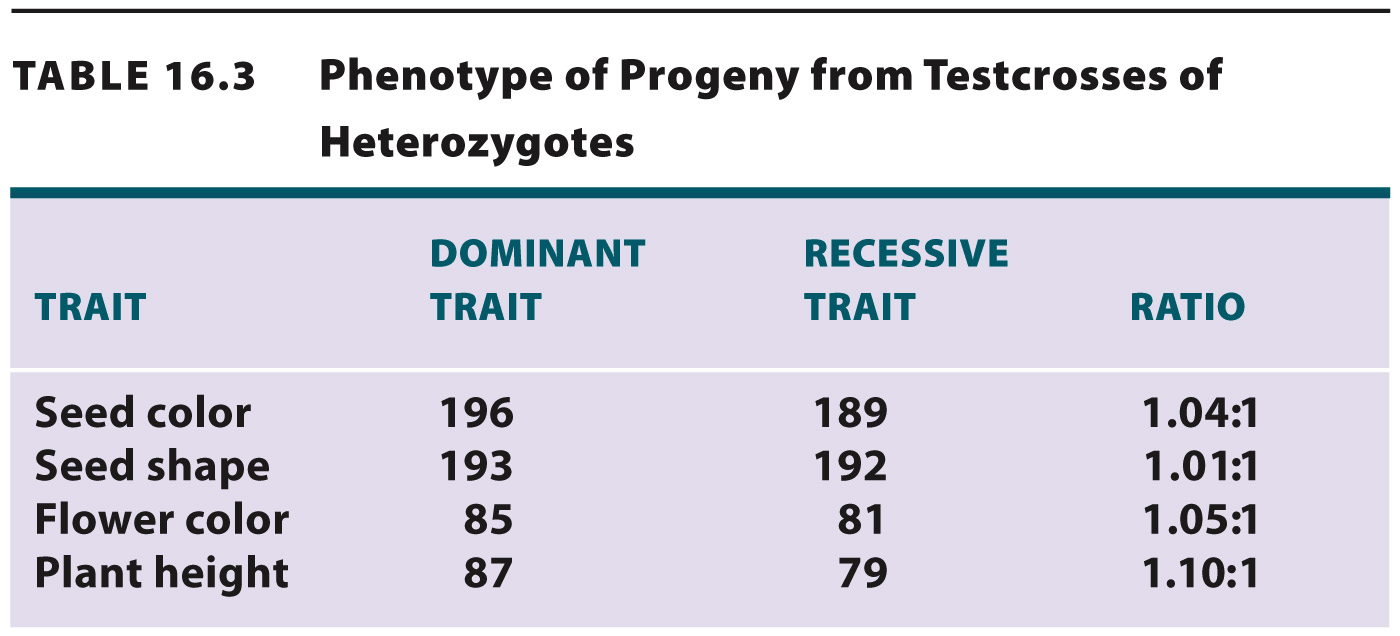A testcross is a mating to an individual with the homozygous recessive genotype.
A more direct test of segregation is to cross the F1 progeny with the true-breeding recessive strain instead of allowing them to self-fertilize. Any cross of an unknown genotype with a homozygous recessive genotype is known as a testcross.
The F1 progeny show the dominant yellow seed phenotype. A yellow seed phenotype can result from either of two possible genotypes, Aa or AA. A testcross with plants of the homozygous recessive genotype (aa) can distinguish between these two possibilities (Fig. 16.8).

FIG. 16.8 A testcross. A cross with a homozygous recessive individual reveals the genotype of the other parent.
Let’s first consider what happens in a testcross to an Aa individual (Fig. 16.8a). An Aa individual produces both A-bearing gametes and a-bearing gametes. As shown by the Punnett square, the predicted offspring from the testcross are ½ Aa zygotes, which yield yellow seeds, and ½ aa zygotes, which yield green seeds. By contrast, an AA individual produces only A-bearing gametes, so all the zygotes have the Aa genotype, which yields yellow seeds (Fig. 16.8b). In other words, the testcross gives different results depending on whether the parent is heterozygous (Aa) or homozygous (AA).
Note that in a testcross the phenotypes of the progeny reveal the alleles present in the gametes from the tested parent. A testcross with an Aa individual yields ½ Aa (yellow seeds) and ½ aa (green seeds) since the Aa parent produces ½ A-bearing and ½ a-bearing gametes. A testcross with an AA individual yields only Aa (yellow seeds) since the AA parent produces only A-bearing gametes. These results are a direct demonstration of the principle of segregation since the ratio of the phenotypes of progeny reflect the equal segregation of alleles into gametes. Some of Mendel’s testcross data indicating 1:1 segregation in heterozygous genotypes are shown in Table 16.3.

